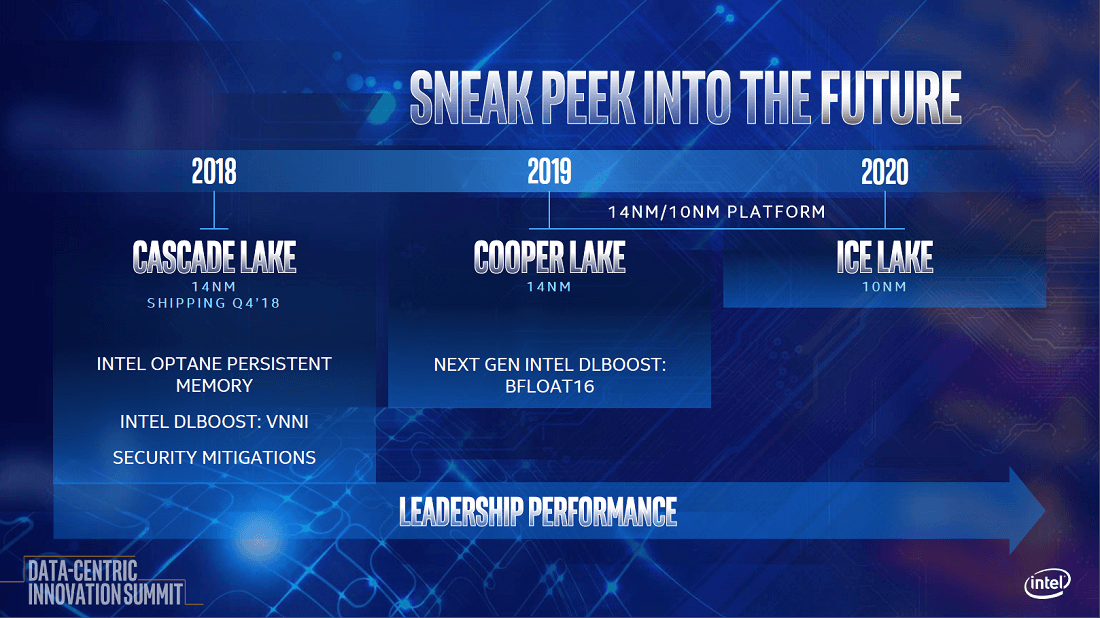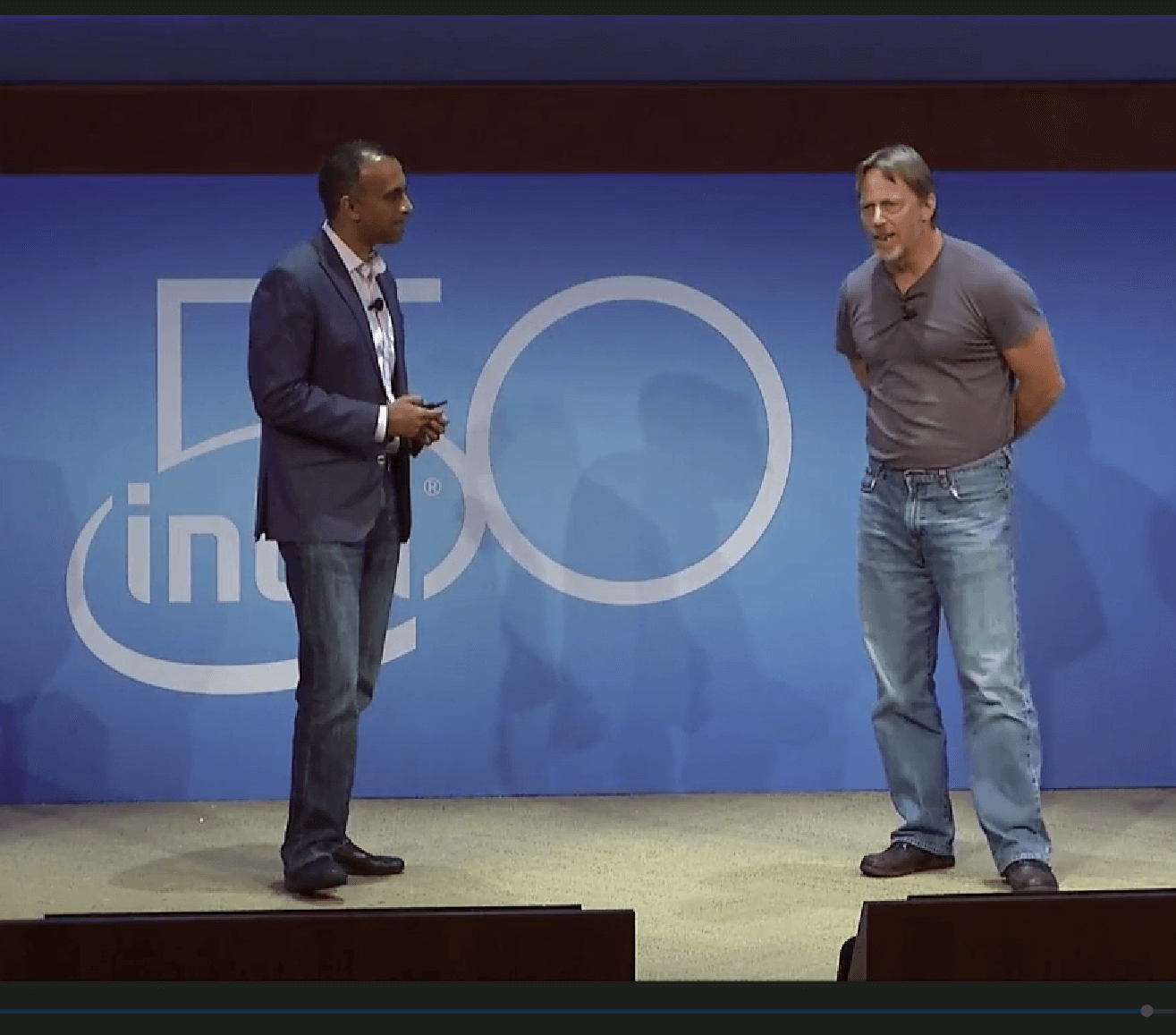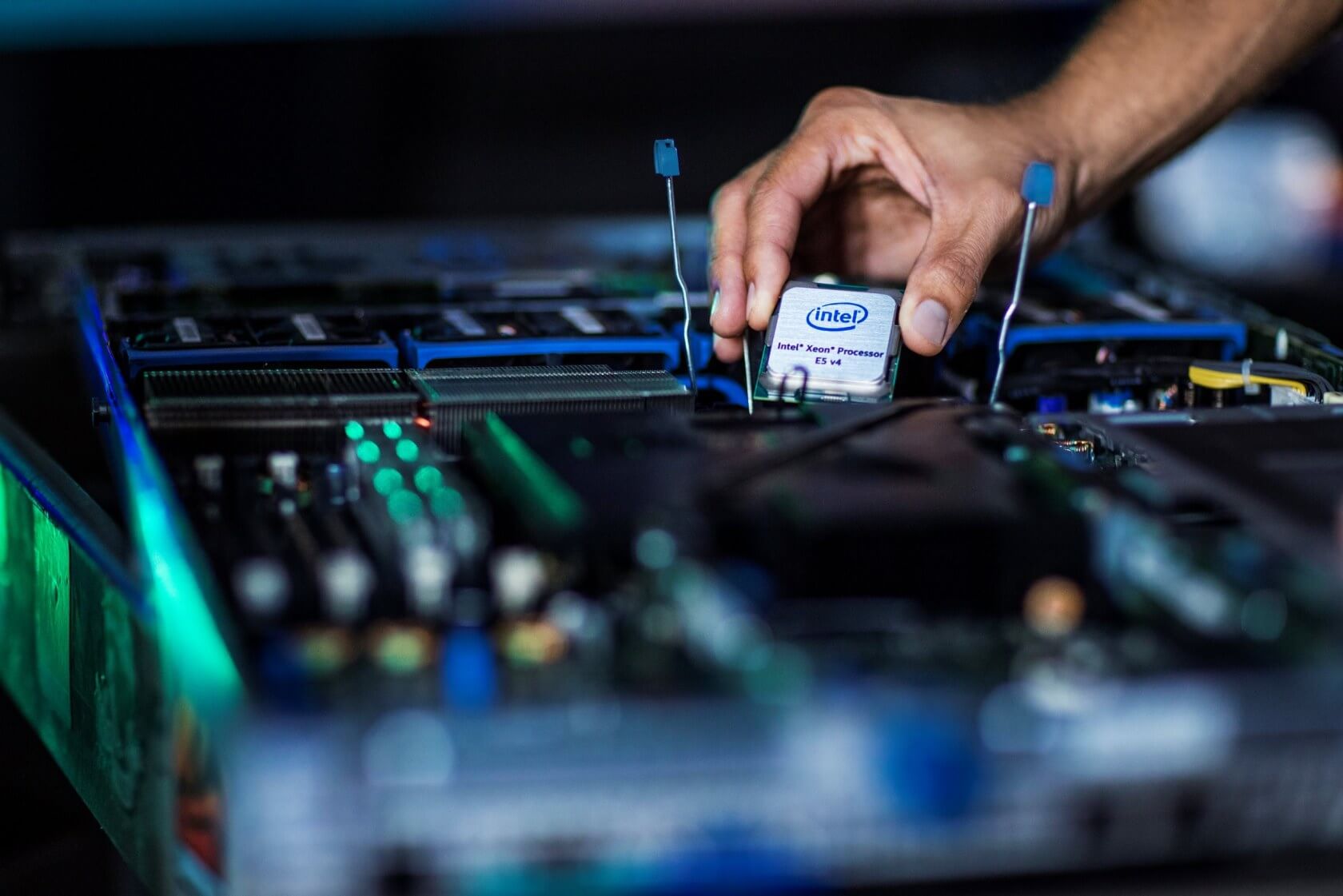Why it matters: Intel's Xeon CPUs have always been developed and fabricated in a direct parallel to their desktop counterparts. While Xeon now introduces a new role for itself, we can't help but notice that it's putting 10nm CPUs into 2020, and (most likely) late 2020. One can expect that the same will happen in HEDT. In the meantime, AMD is polishing off mature 12nm+ yields and will have introduced 7nm, which, at worst, it can use to steal some market share from Intel.
With the long-lived Xeon brand celebrating its 20th anniversary, Intel has held its Data-Centric Innovation Summit this past Wednesday and revealed what's in store for the Xeon processor family, two years into the future.
Naveen Shenoy, Executive Vice President and GM of Intel's Data Center Group showed off Intel's plans for the server space: a greater focus on AI and Machine Learning, under the DLBoost moniker (think "AVX for AI"), critical security improvements to mitigate Spectre/Meltdown vulnerabilities, higher clock frequencies and support for Intel's brand-spanking-new Optane DC Persistent Memory.
Over the course of the next two years, Intel will be rolling out three iterations of its Xeon processors, if it sticks to the plan:
Cascade Lake-based Xeon Scalable Processors will ship in Q4 2018 and include the first set of DLBoost optimizations, called VNNI, or Vector Neural Network Instruction (actually a superset of AVX512) which adds four new AVX instructions (that we know of) to the silicon. Cascade Lake will also support Optane DC Persistent Memory, which Intel is touting as the next big thing in Datacenter performance.

Cooper Lake, the follow-up to Cascade Lake, will launch in late 2019. Unfortunately, contrary to previous information, this will also be a 14nm processor, confirmed Shenoy. Intel happened to mention that 14nm will continue its refinement throughout the coming years. Cooper Lake will include the second set of AI-specific instructions, dubbed BFLOAT16, meant to accelerate numeric data operations in Deep Learning algorithms. Cooper Lake will also debut a new platform which Intel claims will be compatible with its successor, Ice Lake. Intel is also promising a few new enhancements to Optane DC Persistent Memory.
Lastly, there's Ice Lake, the 2020 successor to Cooper Lake that, it turns out, will be the first 10nm Xeon processor. Little else is known, except that we won't expect an early showing of Ice Lake in 2020. Shenoy did mention that the chip will be compatible with the 14nm Cooper Lake platform. While we won't outright call it drop-in compatible, that is what it's sounding like, and that's good news, as we all know Intel isn't usually keen on reuse.
Possibly the highlight of the roadmap reveal was not the roadmap itself, but the moment when Shenoy rolled out Intel's biggest gun (to the tune of Foo Fighters' "Learning to Fly") - Jim Keller - now General Manager of Intel's Silicon Engineering Group. Keller did his utmost to ensure attendees that although he is playing catch-up with things at Intel, he is definitely the person who is sorting out Intel's problems in the 10nm space.

Keller currently enjoys a reputation as a modern day folk hero among PC enthusiasts, and his track record has been solid. While he didn't make any promises, his unscripted address and down-to-earth demeanor, sharply in contrast with your typical Intel executives, drove home the message that all is well chez Intel.
